KESSLER'S DOUBLE-BASS BOILER
In 1851 the 1A1 passenger train locomotive Koenig Ludwig (King Ludwig) was supplied to the German Palatinate region. This was built by Kessler with a patented Bassgeigenkessel. (Double-bass boiler) As the name elegantly suggests, this had a pear-shaped cross section; the lower part could have a reduced width compared with a conventional cylindrical boiler and could therefore be set lower down between the wheels, lowering the centre of gravity. This was a great concern at the time as a low C of G was thought essential for stability. (The actual situation is a bit more complex than that)
No illustration of the Kessler boiler has so far been found, but it is a pretty safe bet that it looked something like the French Thuile Locomotive which had a more-or-less pear-shaped boiler, to clear the driving wheels.
It is, I assume, merely a coincidence that the German word for boiler is "kessel", confusingly close to the name Kessler.The Palatine railway was absorbed by the Bavarian State Railway in 1909.
Six locomotives called "B IVs" were also built by Kessler for the Royal Bavarian State Railways (Königlich Bayerische Staatsbahn) with Kessler boilers. The success or otherwise of this plan is currently unknown, but it is significant that boilers with a non-circular cross-section have always been very rare.
THE HARTMANN BOILER
A similar result was aimed for on locomotives supplied to Bavaria by Hartmann by using two boilers: a lower boiler with a small diameter and a larger, upper boiler. This does not appear to have been satisfactory. After two boiler explosions occurred, all the engines were rebuilt with conventional boilers.
No illustration of the Hartmann boiler has so far been found.
DECEPTIVE BOILERS
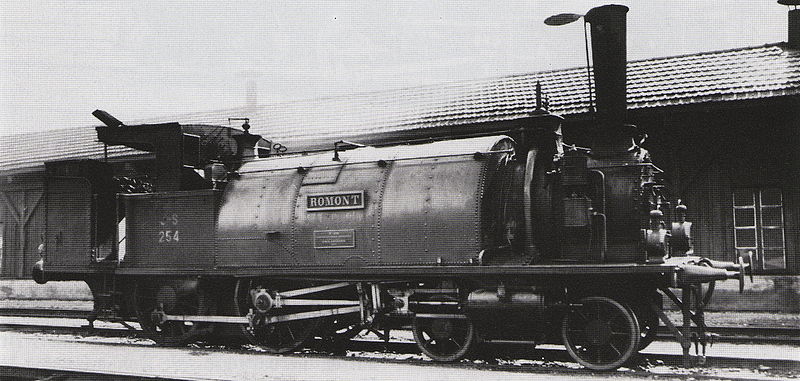 |
| Left: The Tender Locomotive No 254 B2 Romont: built 1862
This "Tender Locomotive" (which means tank engine in European usage) at first sight appears to have a peculiar and interesting form of boiler. In fact it is just a saddle-tank locomotive taken to its logical conclusion, with a huge water tank almost completely covering the conventional boiler. Another point of interest is that it was built in 1862 by the Emil Kessler Machines-Fabrique at Esslingen, the company who experimented with the double-bass boilers described above. It was built for for the Lausanne-Fribourg-Bern railway. (Betribsnr. 4) The build-number was 578. It was taken out of use and scrapped in 1905.
|
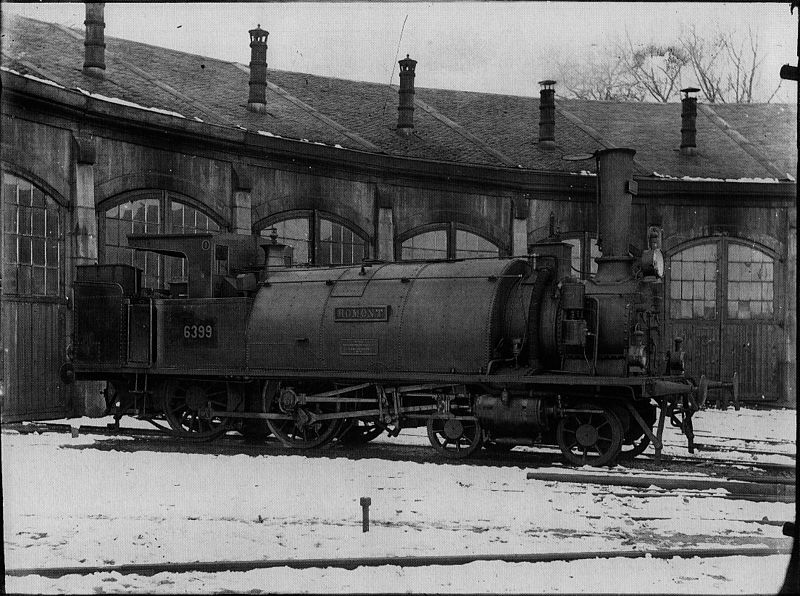 |
| Left: Another wintry view of Romont: 1862
|
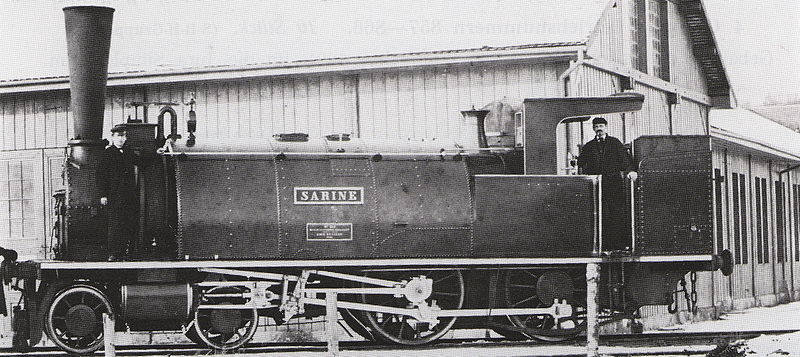 |
| Left: Another saddle-tank; Sarine: built 1862
Tender Locomotive B2 # 260 Sarine was also built by the Emil Kessler Machines-Fabrique at Esslingen in 1862, for the Jura-Simplon railway. (Fabr-Nr. 584) It looks very similiar to Romont but differs in details.
It was built for the Lausanne-Fribourg-Bern Railway (Betribsnr. 10) It appears to have been transferred to the the Jura-Simplon railway in 1890; it was taken out of service in 1901 and subsequently scrapped.
|
ENIGMATIC BOILERS
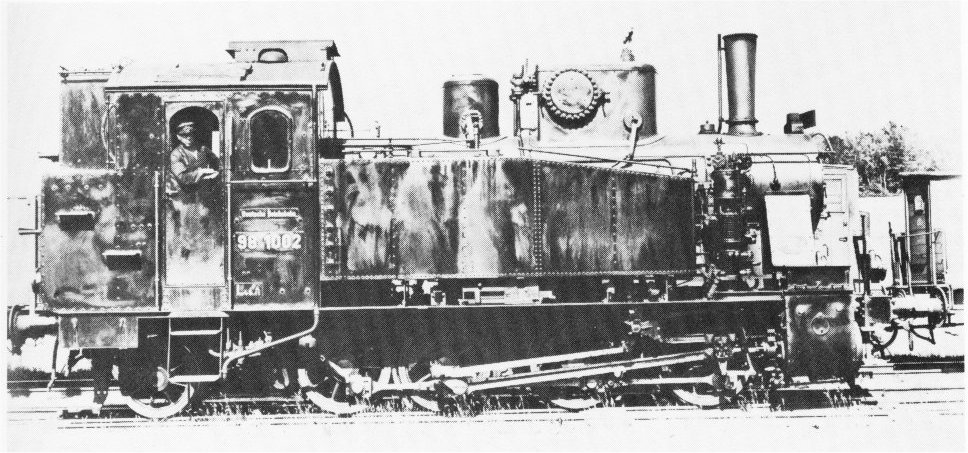 |
| Left: Tender locomotive BR 98.1082: built 1929-33
From 1929 to 1933, forty-five 0-8-2 locomotives from the 98.10 class were manufactured by Krauss in Munich.
The large rectangular box on top of the boiler looks like it might be an eccentric steam-dome, but in fact it was a feed water purification apparatus. How it worked is currently not known. It was fitted to the first 33 locomotives, but it proved a failure and was later removed.
Source: Dampflokomitiven und Ihre Bauteile (Steam locomotives and their components) by Franz P Flury. Pub 1976.
|
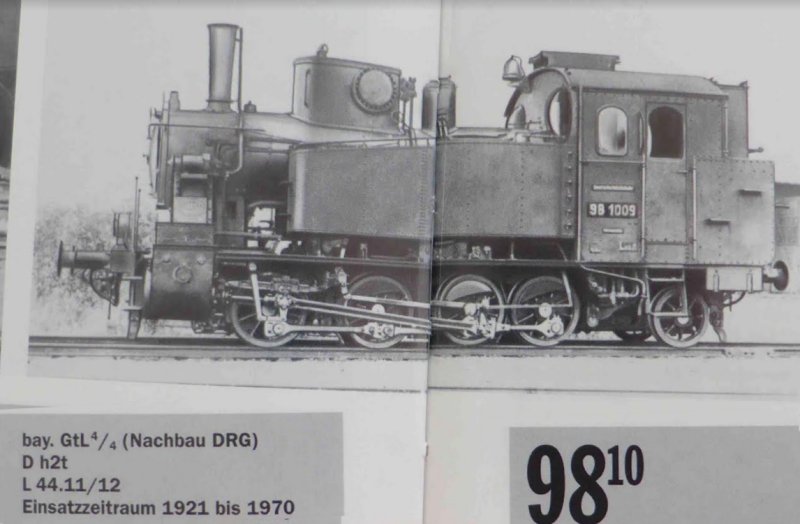 |
| Left: Tender locomotive BR 98.1009: built 1929-33
From the other side. On the left you can see a small thing above the cylinder, with a pipe running up beside the chimney; I suspect this a turbo generator for electric lighting.
The water-purifier on the boiler has a large inspection plate on each side, apparently fixed with a very large number of bolts- about as many as could be fitted around the plate. It seems unlikely the purifier worked at a very high pressure, so one wonders what that was about. The left hand label says 'einsatzzeitraum' which means 'period of use', from 1921 to 1970. The 1921 date does not match up with other sources.
Length: 10.05 m, Max speed: 45 km/h, Service weight: 54.5 tonne, Horsepower: 450, kW: 331
Many thanks to Burkhard for providing this image.
|
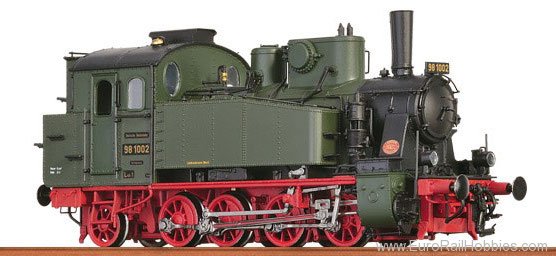 |
| Left: Tender locomotive BR 98.10: built 1929-33
Model by Brawa (40551), with the feed water purifier in place.
|
PRUSSIAN MILITARY LOCOMOTIVES
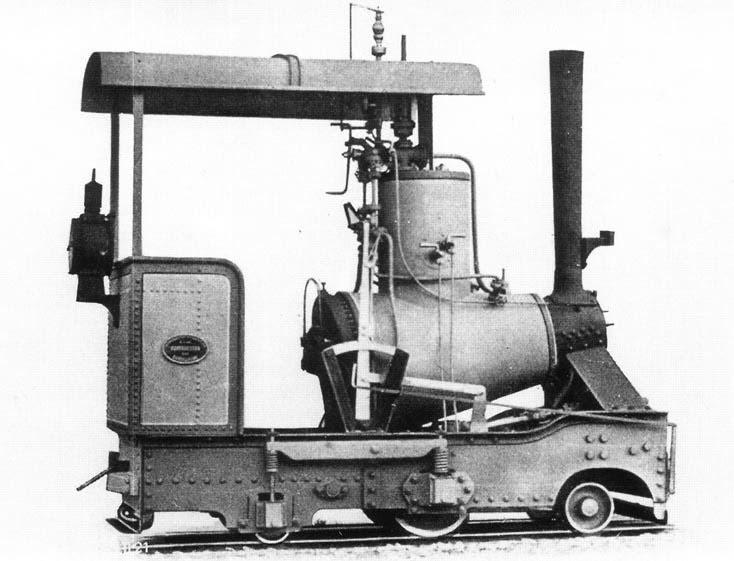 |
| Left: Prussian military locomotive No 447: Feb 1888
This conical-boiler locomotive was built by the Hohenzollern Locomotive Works for militiary use in the field and in fortresses. The gauge was 600 mm (1 ft 11 5/8 inches) It was given Nş 447. It has the wheel arrangement 2-2-2, with bizarrely small wheels.
The conical boiler had the firebox and grate completely contained inside it, with firetubes running upwards to the front tube plate. The boiler therefore had a small volume and in use was completely filled with water. The only steam space was in the top of the over-sized steam dome. Judging by the two try-cocks on the side of the dome, the dome was expected to be about a third full of water. This approach was used to ensure that the top of the firebox was covered with water even if the locomotive was tilted by poor temporary track.
The cylinders (presumably there were two) were mounted inside the frame ahead of the driven axle. A pipe can be seen below the smokebox which took the exhaust to the blastpipe.
There is some more information in Wikipedia.
|
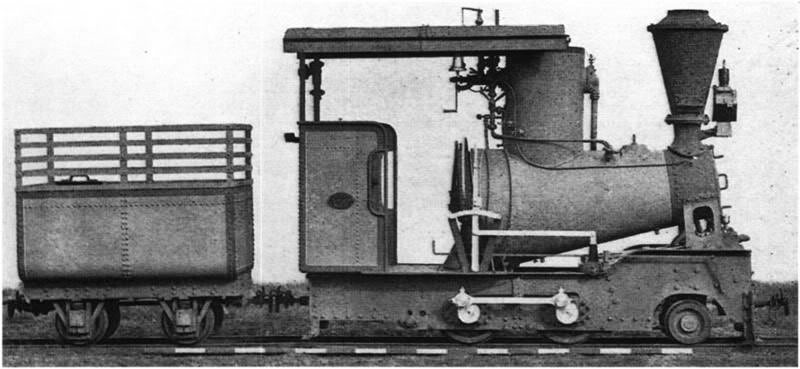 |
| Left: Prussian military Locomotive No 473: May 1888
This locomotive looks superficially similiar to the one above, but differs in many ways, including the wheel arrangement of 2-4-0. It seems highly likely that this is the second of the two engines built, and attempts have been made to overcome the shortcomings of the first. There are now two driven axles, giving more adhesion.
The try-cocks on the side of the steam dome have disappeared, so hopefully a proper water-gauge was fitted.
A tender has been added; the first locomotive could only operate for about an hour before needing refueling.
|
















